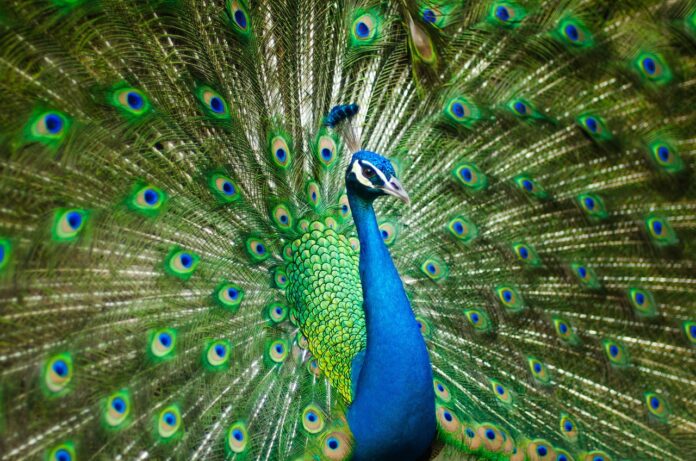Thanks to their unique plumage, peacocks are known worldwide. In many countries, these birds are kept purely for their beauty, and, to be honest, they aren’t particularly useful for much else.
But not everything needs to be practical—sometimes, being beautiful is enough! Peacocks are just that: beautiful and vibrant. Their colorful feathers alone are enough to make many people adore them, and in some countries, they have even found other uses for these birds.
Facts About Peacocks:
- Three Species: There are only three species of peafowl in the world.
- Interbreeding: Although different species of peafowl don’t encounter each other in the wild, they can interbreed in captivity.
- Native Lands: Peafowl are native to Asia, with one species found in Africa.
- Religious Symbol: In the Yazidi religion, the supreme being is depicted as a peacock.
- Corporate Symbol: The American television network NBC has used four different logos featuring a stylized peacock.
- National Symbol: In Myanmar, the peacock is the official symbol of the country.
- Sacred Birds: In Hinduism, peafowl are considered sacred birds.
- Genetic Makeup: Peafowl have 76 chromosomes, compared to humans, who have 46.
- Superstitions: In some countries, there is a belief that keeping peacock feathers at home can bring bad luck.
- Gender Differences: Only male peafowl boast bright plumage. Females, by contrast, are quite ordinary in appearance and not nearly as colorful.
- Culinary Use: In some countries, peafowl are eaten.
- Historical Consumption: It’s known that Ivan the Terrible enjoyed dishes made from peacock meat.
- Flying Abilities: Despite their cumbersome plumage, peafowl can fly quite well, although they prefer to stay on the ground.
- Size: An adult peafowl can have a body length of over a meter.
- Snake Hunters: Peafowl hunt dangerous snakes, such as young cobras, which is why they are often kept in Indian households.
- Rain Callers: In some Asian countries, peafowl’s mating rituals begin around the start of the rainy season, leading to beliefs that they can summon rain.
- Infrasound Communication: As they move, peafowl feathers rub against each other, producing infrasound that humans cannot hear, which scientists believe is a form of communication between the birds.
- Tail Feathers: A single tail feather can reach up to 2 meters in length.
- Tail vs. Body: The length of a peacock’s tail feathers can be two to three times the length of its body.
- Medieval Decoration: Medieval knights adorned their helmets with peacock feathers.
- Traditional Medicine: In Tibet, some people still believe that peacock meat can cure various diseases.
- Cultural Symbolism: Historically, in Russia, the peacock symbolizes vanity and pride, whereas in Asian countries, it represents immortality and dignity.
- Disaster Prediction: Peafowl can sense approaching natural disasters such as floods, hurricanes, or earthquakes.
- Defense Mechanism: When faced with a predator, a male peafowl will turn its back and spread its tail, hoping the eye-like spots on the feathers will confuse the attacker and give it time to escape.
- Chicken Relatives: Zoologically, peafowl are relatives of chickens.
- Evolutionary Purpose: Scientists believe the peacock’s tail evolved to attract females, which is indeed what the males use it for. While most birds attract mates with their voices, peafowl do so with their appearance, as their calls are not particularly melodic.
- Mature Plumage: The spectacular tail feathers of a male peafowl take about three years to grow.
- Lifespan: In captivity, peafowl can live up to 20 years.
- Harem Structure: Male peafowl typically gather a harem of three females.
- Tail Feathers vs. Actual Tail: The beautiful fan of feathers that peacocks display actually grows from a spot above the tail, while the actual tail feathers are short and unimpressive.
